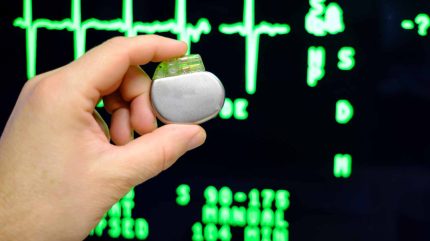
Effective coatings are essential for medical devices in not only performance but also in complying with increasing regulations and environmental considerations.
When the regulations change or new information comes to light about the effects of chemicals on human health or the environment, replacements are required that may initially be difficult to obtain.
Formacoat is a family-run business based in Minnesota. The US company stocks nearly 100 varieties of coatings from 45 trusted vendors. Over the past two decades, what effectively started as a one-man operation in a garage has grown into a nationally and internationally sought-after expert supplier of applied coatings.
Formacoat CEO and founder, Mark Gross, has witnessed considerable changes throughout the industry since he set up the company. With medical devices becoming more complex, new solutions are continually needed.
Adapting to changing coating requirements
Increased awareness about the effects of chemicals in coatings can mean that products that once dominated the market are replaced by newer solutions to meet the latest requirements.
A prime example is Teflon hydrophobic coating, which has changed dramatically during the last two decades due to new regulations in the US.
The FDA stepped in after manufacturers were poorly designed or applied coatings were causing particulates to be generated by medical devices in vivo, which presented considerable risks to patient safety.
“From a safety standpoint, there has been a lot of change in the hydrophobic coating market over the last 20 years with regulations, more exact requirements, standards or inspection of particle generation from all coatings,” explains Mark Gross. “But the main driver for that, across the entire industry, was the so-called, and collectively grouped at the time, ‘Teflon’ coatings.”
These days, there is a growing understanding of the damage to human health and the environment caused by forever chemicals. Used in countless products, there is increasing pressure to phase out forever chemicals in favour of more eco-friendly options.
Manufacturers seek alternative formulations while reducing risks as much as possible. However, new coatings must perform as effectively as the ones they are replacing.
“There’s lots of evolution in getting away from the forever chemicals,” says Gross. “There are people coming out with new technologies. They make Teflon-type coatings to be better and safer for the environment. I think it’s a little premature to say whether these coatings will meet the environmental and health challenges. But there is at least a change and people trying to solve that problem.
“This new technology is kind of in its infancy and we’ll see what people come up with and how they perform in terms of robustness, durability, and friction-reducing properties, as well as their environmental situation.”
Solving future health challenges with coatings
Another health trend is a race to develop microchips that can stay in the body for the long term to monitor health. There are devices that people are intended to act as sensors within the bloodstream over the long term to new depths of data on an individual’s health. High-profile examples are chips inside the brain, which present considerable complexities for coatings.
“These are very challenging applications because the sensor must stay clear of biofouling. Whether it be bacterial, thrombosis tissue forming, or things covering the surfaces,” adds Gross. “These are some of the most challenging things we have. Because the inventors would like these devices to stay in the bloodstream for years and still be functional sensors.”
A further challenge is with health innovations such as artificial heart valves, which must exist in a demanding environment with considerable movement and other challenges of blood pumping and flowing without causing thrombus or clotting.
“A lot of those patients may end up being on antithrombogenic drugs for the life of the implant,” adds Gross. “This is a gigantic area for technologies that exist or are being created to solve these problems. When they succeed, we’ll be much better at addressing some of the health issues that are occurring in people around the world. That kind of stuff is exciting to me.”
The importance of R&D in staying ahead of the curve
One of the ways the company remains at the forefront of medical coatings is its Formacoat Formula, which involves asking customers up front: “What do you want and why?”
This might sound simple, but it immediately gets to the core of the issue. From there, solutions can be developed.
Another key tool in Formacoat’s arsenal is its highly innovative R&D department, which can conduct a range of tests to determine the optimum coating. More recently, the department has been using 3D printing to accelerate development timelines for medical device concepts.
“There are always companies trying to find ways to do what we’ve done. The challenge for Formacoat is to stay ahead of them by continuing to expand on what we’re doing and how we do it by trying to solve the tough challenges that customers come to us with,” adds Gross. “What makes it exciting is when we can actually help support the new technology for solving a health issue.”



